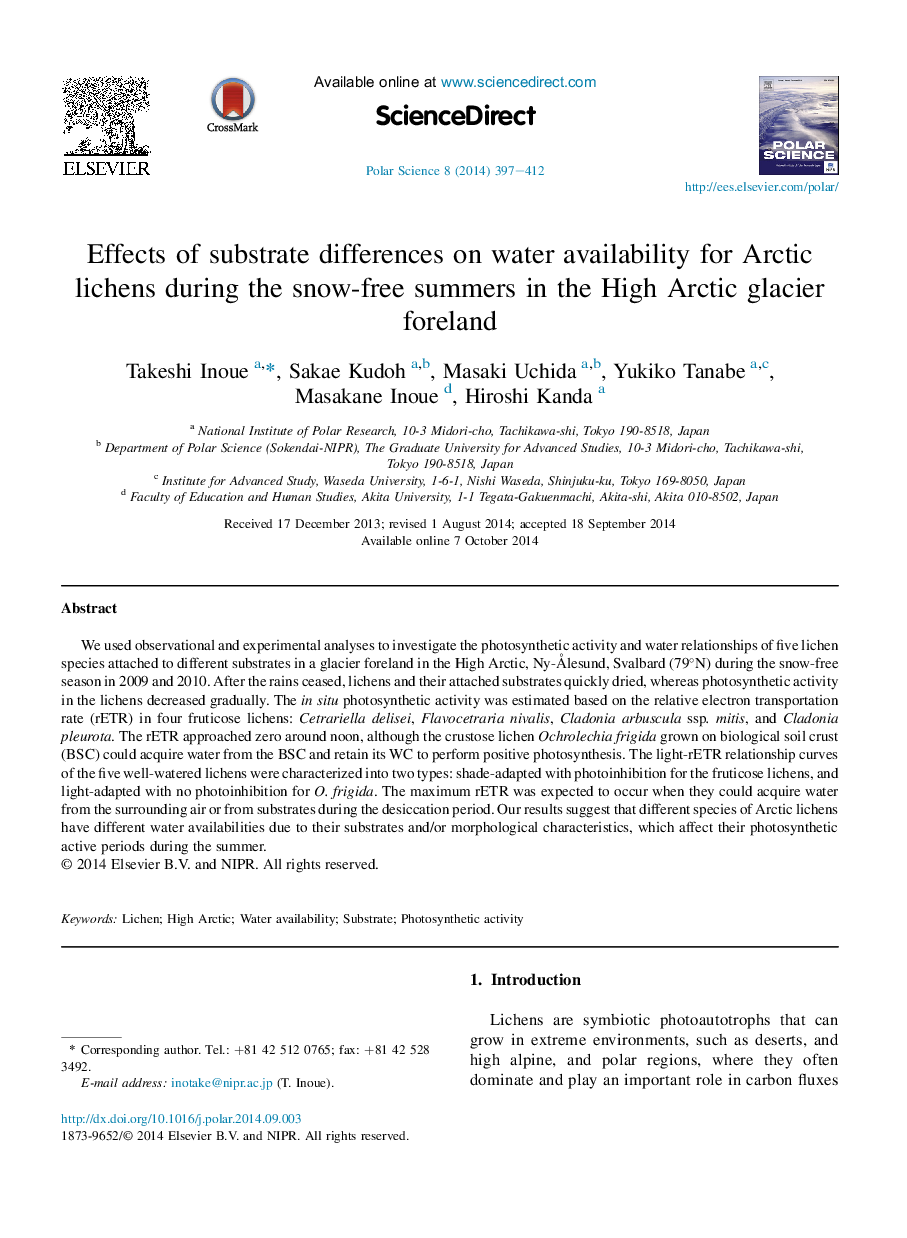| Article ID | Journal | Published Year | Pages | File Type |
|---|---|---|---|---|
| 4683327 | Polar Science | 2014 | 16 Pages |
We used observational and experimental analyses to investigate the photosynthetic activity and water relationships of five lichen species attached to different substrates in a glacier foreland in the High Arctic, Ny-Ålesund, Svalbard (79°N) during the snow-free season in 2009 and 2010. After the rains ceased, lichens and their attached substrates quickly dried, whereas photosynthetic activity in the lichens decreased gradually. The in situ photosynthetic activity was estimated based on the relative electron transportation rate (rETR) in four fruticose lichens: Cetrariella delisei, Flavocetraria nivalis, Cladonia arbuscula ssp. mitis, and Cladonia pleurota. The rETR approached zero around noon, although the crustose lichen Ochrolechia frigida grown on biological soil crust (BSC) could acquire water from the BSC and retain its WC to perform positive photosynthesis. The light-rETR relationship curves of the five well-watered lichens were characterized into two types: shade-adapted with photoinhibition for the fruticose lichens, and light-adapted with no photoinhibition for O. frigida. The maximum rETR was expected to occur when they could acquire water from the surrounding air or from substrates during the desiccation period. Our results suggest that different species of Arctic lichens have different water availabilities due to their substrates and/or morphological characteristics, which affect their photosynthetic active periods during the summer.
